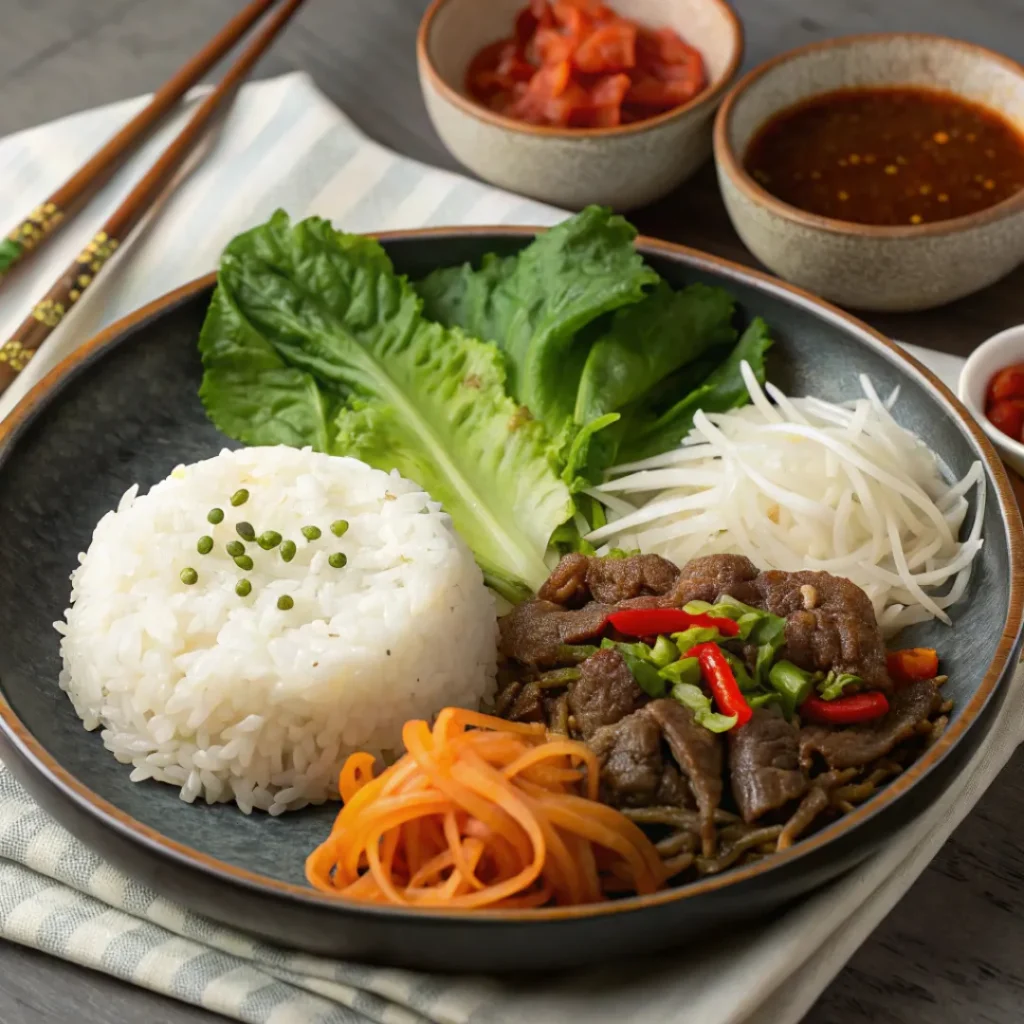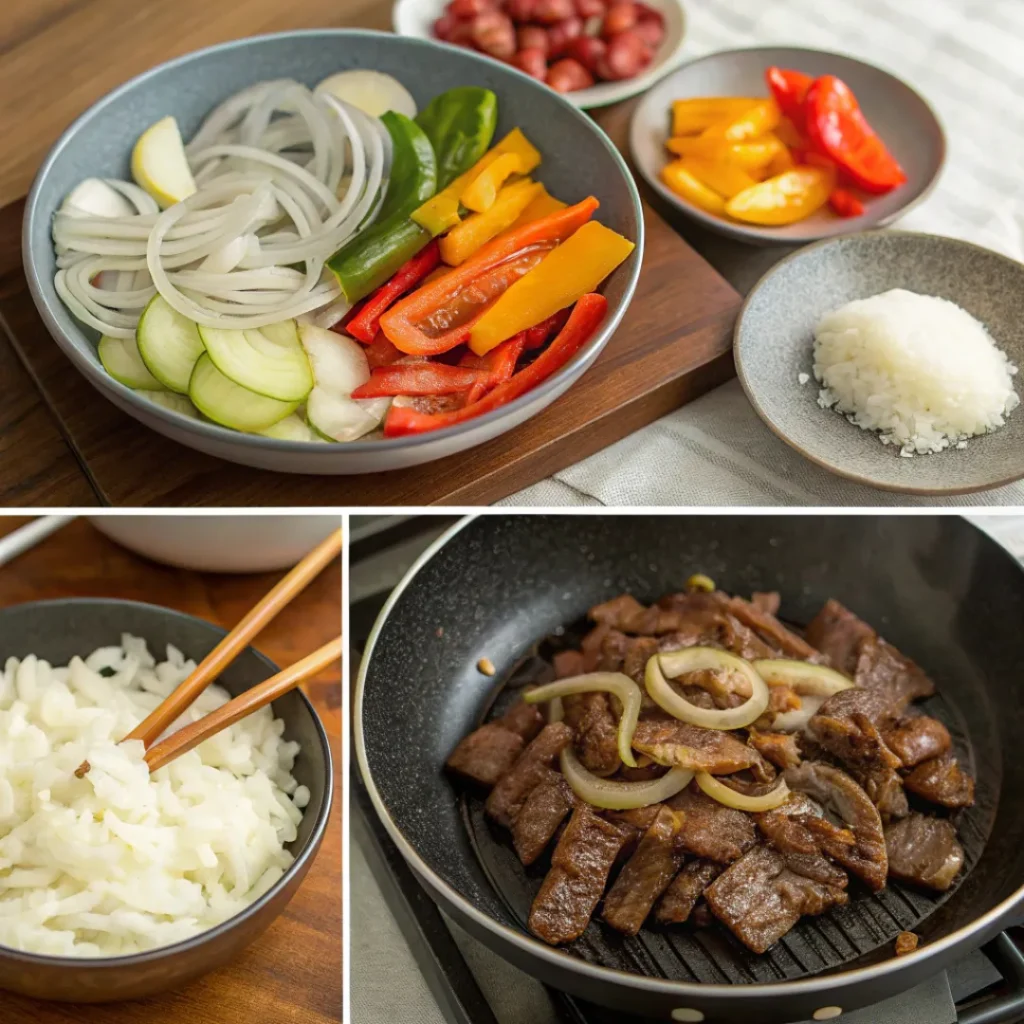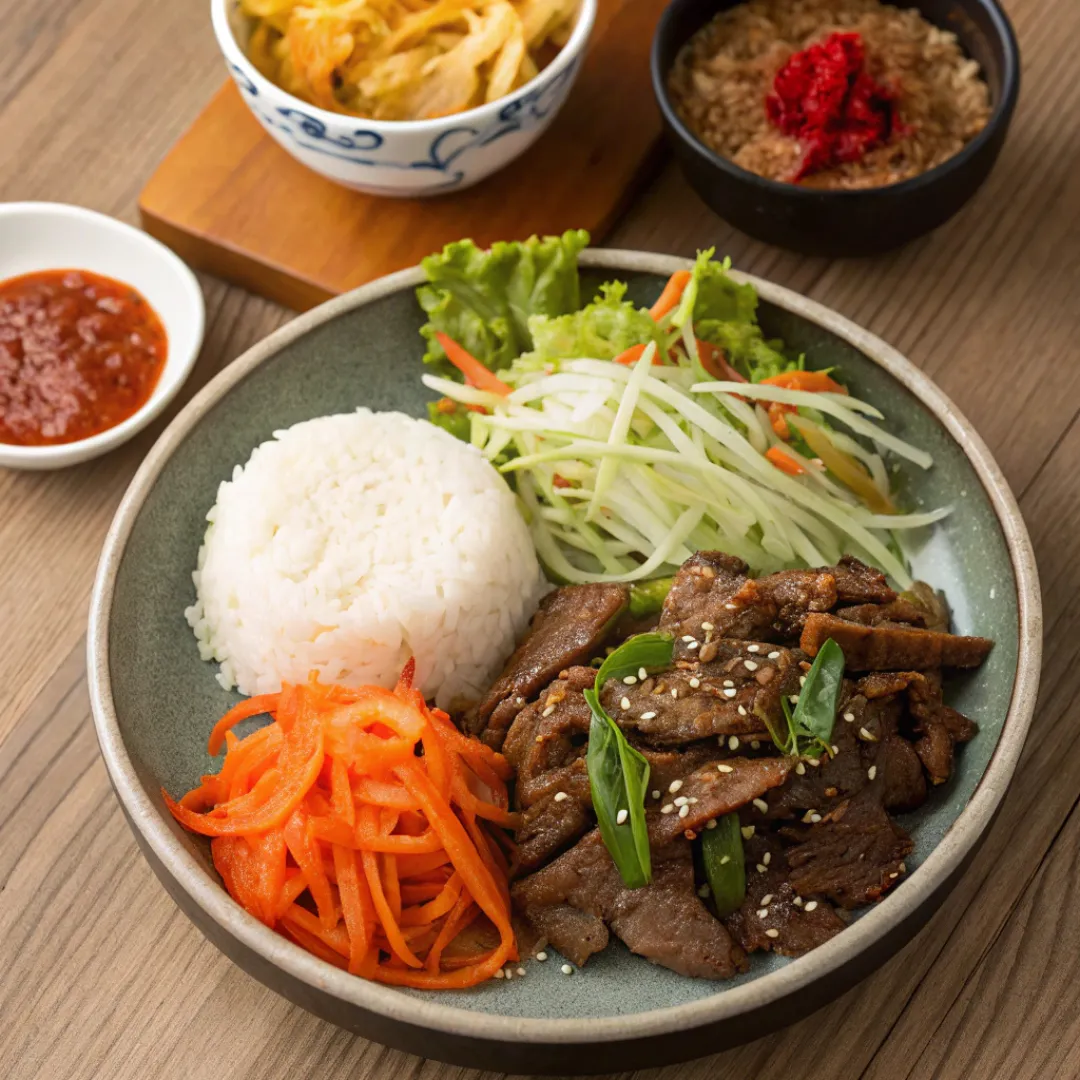Beef bulgogi, often referred to as “fire meat,” is a quintessential Korean dish that features thinly sliced beef marinated in a mixture of soy sauce, sugar, sesame oil, garlic, and other seasonings. Cooks then grill or pan-fry the marinated meat until it caramelizes on the edges, resulting in a dish bursting with flavor. But what goes best with beef bulgogi? Traditional accompaniments such as steamed rice, kimchi, pickled vegetables, and lettuce wraps enhance the dining experience, balancing the dish’s savory-sweet profile. Additionally, side dishes like japchae (stir-fried glass noodles) and Korean-style potato salad can further complement the bold flavors of bulgogi, making the meal even more satisfying.
Why Side Dishes Matter
Side dishes, or banchan, hold a crucial place in Korean cuisine. These small, flavorful dishes complement the main course by providing balance, contrast, and a variety of textures and flavors. When paired with beef bulgogi, the right side dishes enhance its savory-sweet notes, adding depth and complexity to the meal. From spicy kimchi to refreshing lettuce wraps, each accompaniment plays a significant role in creating a well-rounded and satisfying dining experience.
Essential Pairings for Beef Bulgogi
To fully enjoy beef bulgogi, it’s important to serve it with the right pairings. Here are some of the most popular and traditional accompaniments:
Steamed Rice
Steamed rice remains the most essential and traditional pairing for beef bulgogi. The neutral flavor and fluffy texture of white rice perfectly soak up the rich, flavorful juices from the bulgogi. Rice balances the intense flavors of the meat, making each bite harmonious. For a healthier option, you can also serve brown rice or multigrain rice (japgokbap), which add a nutty flavor and extra nutrients to the meal.
Kimchi
Kimchi holds a special place in Korean cuisine and almost always accompanies beef bulgogi. This fermented vegetable dish, typically made with napa cabbage, offers a spicy, tangy, and slightly sour flavor that beautifully contrasts with the sweet and savory taste of bulgogi. The crunchiness of kimchi also adds a satisfying texture to the meal, while its probiotic properties aid in digestion.
Japchae (Korean Glass Noodles)
Japchae is a popular Korean side dish made from stir-fried glass noodles and vegetables, and it pairs perfectly with beef bulgogi. The chewy texture of the noodles and the savory flavors of the vegetables make it a delightful complement to the rich taste of bulgogi.
Try making Japchae at home with this recipe on Korean Bapsang.
Ssam (Lettuce and Perilla Wraps)
In Korea, diners often wrap bulgogi in fresh lettuce or perilla leaves. This method, known as ssam, involves placing a slice of bulgogi, a dab of ssamjang (Korean dipping sauce), and possibly a slice of garlic or a green chili pepper onto a lettuce or perilla leaf, then folding it up and eating it in one bite. The fresh, crisp leaves provide a refreshing contrast to the rich, flavorful meat, making each bite light and satisfying.
Ssamjang (Korean Dipping Sauce)
Ssamjang is a thick, savory-sweet paste made from a combination of doenjang (fermented soybean paste), gochujang (chili paste), garlic, sesame oil, and sometimes honey. This sauce adds a punch of umami and spice, making it an excellent condiment for bulgogi wraps. A small dollop of ssamjang on your ssam adds depth of flavor and enhances the taste of the beef.
Pickled Vegetables (Jangajji)
Jangajji refers to various Korean pickled vegetables, such as radishes, cucumbers, or garlic scapes. These pickles, marinated in soy sauce or vinegar and sugar, result in a tangy, salty, and slightly sweet flavor. The acidity of jangajji helps cleanse the palate between bites of bulgogi, keeping the meal balanced and preventing the richness of the meat from becoming overwhelming.
Korean Potato Salad (Gamja Salad)
Gamja salad is a creamy, slightly sweet potato salad that often includes carrots, cucumbers, and sometimes apples for a bit of sweetness. This dish provides a cool and creamy contrast to the bold flavors of bulgogi and other banchan, making it a popular side dish in Korean BBQ meals. The smooth texture and mild flavor of gamja salad add a comforting element to the meal.

Complementary Soups and Stews
In addition to banchan and rice, soups and stews often accompany beef bulgogi to add warmth and comfort to the meal. Here are a few traditional Korean soups and stews that pair well with bulgogi:
Doenjang Jjigae (Soybean Paste Stew)
Doenjang jjigae is a hearty stew made with doenjang (fermented soybean paste), tofu, and vegetables. The rich, savory flavors of the stew complement the sweetness of bulgogi, creating a well-rounded and satisfying meal. The deep umami flavor of the stew adds complexity to the bulgogi, making it a favorite pairing.
Gyeranjjim (Steamed Egg)
Gyeranjjim is a light, fluffy steamed egg dish that often appears as a side dish in Korean meals. The delicate texture and mild flavor of gyeranjjim provide a nice contrast to the bold, savory flavors of bulgogi, making it a perfect addition to the meal. This dish is especially appreciated for its soothing texture and its ability to balance out the strong flavors of the other dishes.
Miyeokguk (Seaweed Soup)
Miyeokguk, or seaweed soup, is a nutritious and light soup made with seaweed and a simple broth, often flavored with soy sauce and sesame oil. Traditionally eaten on birthdays in Korea, miyeokguk also pairs wonderfully with bulgogi, providing a light and healthy complement to the meal. The subtle flavors of miyeokguk do not overpower the bulgogi, making it a refreshing side.
Refreshing Beverages
To complete the meal, pair your bulgogi with one of these traditional Korean non-alcoholic beverages:
Korean Barley Tea (Bori Cha)
Bori cha is a traditional Korean tea made from roasted barley. It has a light, nutty flavor and is typically served hot or cold. Bori cha is an excellent beverage to pair with bulgogi, as it helps cleanse the palate and complements the meal without overpowering the flavors. Its subtlety makes it a refreshing choice to enjoy alongside the rich and savory bulgogi.
Sikhye (Sweet Rice Punch)
Sikhye is a traditional Korean sweet rice punch, made with fermented malt and cooked rice. Its mild sweetness and slightly tangy flavor make it a refreshing dessert beverage that pairs well with the savory and sweet notes of bulgogi. Sikhye is typically served chilled, providing a satisfying finish to the meal and helping to cleanse the palate after the rich flavors of bulgogi.
How to Create a Complete Bulgogi Meal at Home
Creating a complete bulgogi meal at home is easier than you might think. Here are some tips to help you put together a delicious and authentic Korean dinner:
Marinate the Beef
Prepare the bulgogi marinade by mixing soy sauce, sugar, sesame oil, garlic, and other seasonings. Marinate thinly sliced beef for at least an hour, or overnight for the best flavor.
Prepare the Side Dishes
While the meat marinates, prepare your banchan. Make a batch of kimchi, japchae, and gamja salad, and have fresh lettuce and perilla leaves ready for wrapping.
Cook the Bulgogi
Grill or pan-fry the marinated beef until it’s cooked through and slightly caramelized. Serve immediately with rice and the prepared side dishes.
Serve the Meal
Arrange all the dishes on the table, along with small bowls of ssamjang and pickled vegetables. Don’t forget to serve your meal with bori cha or sikhye!

Frequently Asked Questions
Can I use chicken instead of beef for bulgogi?
Yes, chicken serves as a popular alternative to beef in bulgogi. Adjust the marinade slightly to suit the different meat, and you’ll still enjoy a delicious flavor profile.
What is the best way to eat bulgogi?
Wrap the grilled meat in fresh lettuce or perilla leaf with a bit of ssamjang, and enjoy it in one bite. This method, known as ssam, is a traditional way to enjoy Korean BBQ.
How long should I marinate the meat for bulgogi?
Marinate the meat for at least one hour. For the best flavor, marinate it overnight.
Can I make bulgogi without a grill?
Yes, you can make bulgogi in a pan on the stovetop. Heat the pan over medium-high heat and cook the marinated meat until it’s browned and cooked through.
What other dishes can I serve with bulgogi?
In addition to the traditional side dishes mentioned, you can serve bulgogi with other Korean dishes like bibimbap (mixed rice with vegetables) or kimchi fried rice for a complete Korean meal.
Conclusion
Beef bulgogi offers more than just a dish; it provides a culinary experience that showcases the best of Korean flavors and traditions. The combination of tender, marinated meat with a variety of side dishes, rice, and soups creates a meal that satisfies and delights. Whether you enjoy bulgogi at a restaurant or make it at home, including these traditional accompaniments will help you fully appreciate the rich and diverse flavors of Korean cuisine.

